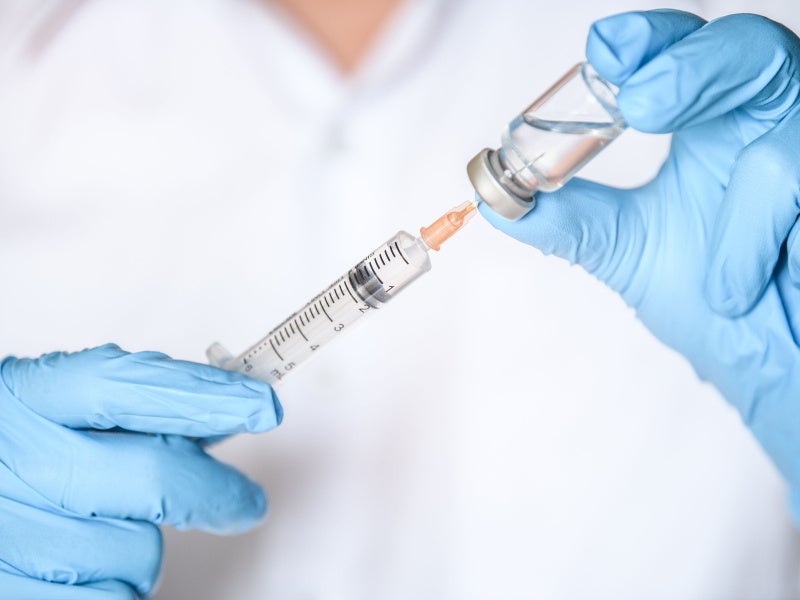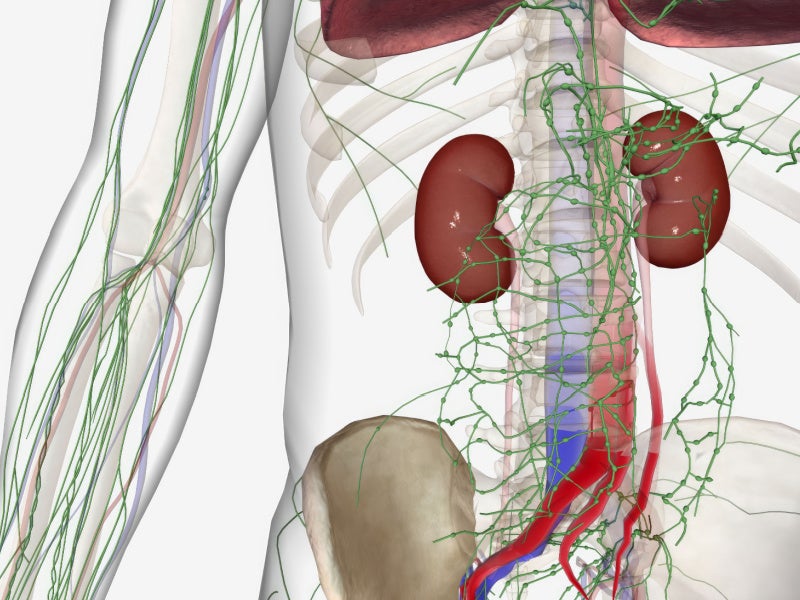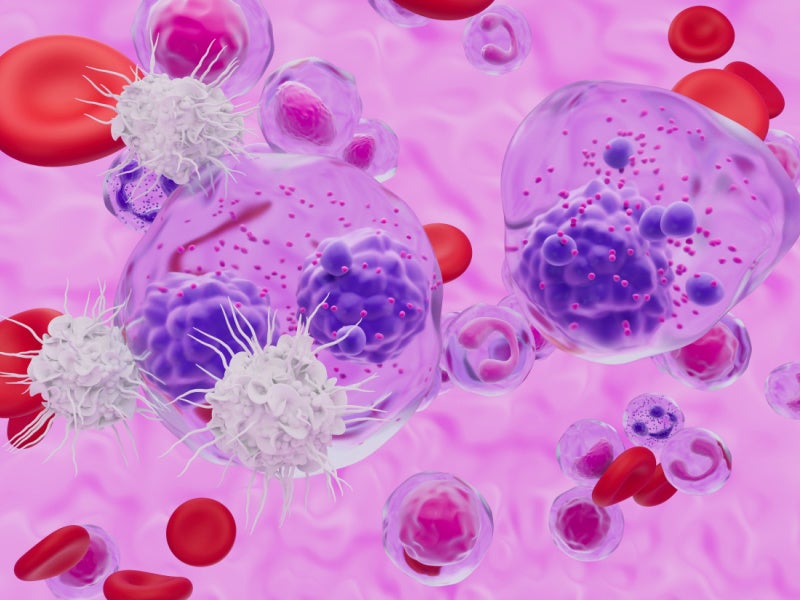TALVEY is indicated as a monotherapy for adults with relapsed or refractory multiple myeloma (RRMM) who have received at least four prior lines of therapy, including a proteasome inhibitor, an immunomodulatory agent, and an anti-CD38 monoclonal antibody.
TALVEY was developed by Janssen Pharmaceutical, a pharmaceutical company based in Belgium. It is a colourless to light yellow solution for injection, with dosages available in 3mg/1.5ml (2mg/ml) and 40mg/ml single-dose vials. The administration is either weekly or biweekly via subcutaneous injection.
TALVEY is available through a restricted programme known as the TECVAYLI and TALVEY Risk Evaluation and Mitigation Strategy, ensuring that its administration is carefully monitored.
Regulatory approvals for TALVEY
The US Food and Drug Administration (FDA) granted accelerated approval to TALVEY in August 2023, acknowledging its potential as a first-in-class therapeutic option for RRMM patients. The approval was preceded by the FDA’s Priority Review initiation in February 2023, following the biologics license application submitted by the company in December 2022.
In a parallel development, the European Commission (EC) provided conditional marketing authorisation for TALVEY, marking a significant milestone for the treatment’s availability in Europe, in August 2023.
TALVEY’s journey towards approval was further supported by the FDA’s breakthrough therapy designation in June 2022.
The orphan drug designation was granted by both the FDA and the EC in May and August 2021, respectively.
Multiple myeloma causes and symptoms
Multiple myeloma is the third most common incurable blood cancer that affects plasma cells in the bone marrow, characterised by the rapid proliferation and spread of abnormal plasma cells, leading to the formation of tumours in the bone marrow.
Symptoms can be elusive initially but often manifest as bone pain or fractures, fatigue due to low red blood cell counts, high calcium levels, kidney issues, and nerve damage, among others. Early detection is crucial and involves a combination of lab tests, biopsies, and imaging.
A five-year relative survival rate of an individual with multiple myeloma stands at 59.8%.
TALVEY’s mechanism of action
TALVEY, as a bispecific antibody, has a unique mechanism of action, targeting both G protein-coupled receptor class C group 5 member D (GPRC5D) on myeloma cells and the CD3 receptor on T cells, thus facilitating an immune response to attack the cancer cells.
TALVEY works simultaneously with GPRC5D and CD3 receptors. The dual action is crucial for activating T cells and directing their cytotoxic capabilities towards the cancerous cells. The result is the lysis of GPRC5D-expressing cells, mediated by the release of perforin and granzymes from the T cells.
The targeted approach controls the expression of GPRC5D mainly on plasma cells, sparing B cells and B cell precursors, and thus focusing the immune system’s attack on the myeloma cells particularly.
Clinical trials on TALVEY
The FDA approval of TALVEY was based on the Phase 1/2 single-arm, open-label, multicohort, multicentre dose-escalation clinical study, MonumenTAL-1, which assessed the efficacy of TALVEY monotherapy in a robust study design.
The MonumenTAL-1 clinical trial was a comprehensive study conducted in two phases in more than 300 patients across multiple centres.
In Phase I, the safety and efficacy of TALVEY were evaluated in adults with RRMM, who received three or more prior lines of therapy, including a proteasome inhibitor, an immunomodulatory agent, and an anti-CD38 monoclonal antibody.
Patients received TALVEY at step-up doses followed by a consistent weekly or biweekly dosing schedule. The biweekly schedule included step-up doses of 0.01mg/kg, 0.06mg/kg, and 0.3mg/kg, followed by 0.8mg/kg of TALVEY administered subcutaneously every two weeks.
The weekly schedule involved step-up doses of 0.01mg/kg and 0.06mg/kg, followed by 0.4mg/kg of TALVEY administered subcutaneously each week.
Phase II focused on the efficacy of TALVEY at the recommended Phase II dose(s) of 0.4mg/kg weekly and 0.8mg/kg biweekly.
The primary endpoint was the overall response rate (ORR), and the secondary endpoint was the duration of response (DOR), both assessed by an Independent Review Committee using International Myeloma Working Group criteria.
The trial achieved an ORR exceeding 70%, with durable responses noted in more than 60% of patients who had previously undergone T-cell redirection therapy.
The most common adverse reactions reported in the clinical trial were cytokine release syndrome, dysgeusia, nail disorder, musculoskeletal pain, skin disorder, rash, fatigue, weight decrease, dry mouth, xerosis, dysphagia, upper respiratory tract infection, diarrhoea, hypotension and headache.
Additional clinical trials on TALVEY
In December 2023, new analyses highlighted TALVEY’s versatility and sustained efficacy in treating patients with RRMM. Data from further studies in the MonumenTAL-1 clinical trial indicated that patients treated with TALVEY responded well to subsequent classes of therapy, including chimeric antigen receptor T-cell (CAR-T) therapy targeting B-cell maturation antigen (BCMA) and bispecific antibodies targeting Fc receptor-like protein 5 (FcRH5).
An improvement in adverse events was noted among patients on reduced-intensity dosing regimens. Additionally, preliminary results from a TALVEY combination study were reported.
The findings also revealed that patients who discontinued TALVEY could still achieve responses with subsequent antimyeloma therapies (SATs).
Those treated with anti-BCMA bispecific antibodies as the first SAT achieved an ORR of 58% while those receiving anti-FcRH5 bispecific antibody therapy as the first SAT had a response rate of 75%.
An updated analysis from the MonumenTAL-1 study focused on the safety and efficacy of TALVEY in patients with RRMM post-T-cell redirection therapy.
The subgroup analysis showed that TALVEY maintained strong efficacy across populations previously exposed to T-cell redirection therapy, predominantly anti-BCMA, with an ORR of 73% and a median DOR exceeding one year in the post-CAR-T cell therapy setting.
The response rate for patients previously treated with bispecific antibodies was more than 56%.
Beyond the MonumenTAL-1 trial, TALVEY continues to be investigated in various settings. It is part of combination and sequential therapy studies across all lines of multiple myeloma treatment, which include studies with other bispecific antibodies and existing standards of care.
The drug is currently being evaluated in several combination studies (NCT04586426, NCT04108195, NCT05050097, NCT05338775) and a randomised Phase III study (NCT05455320).






